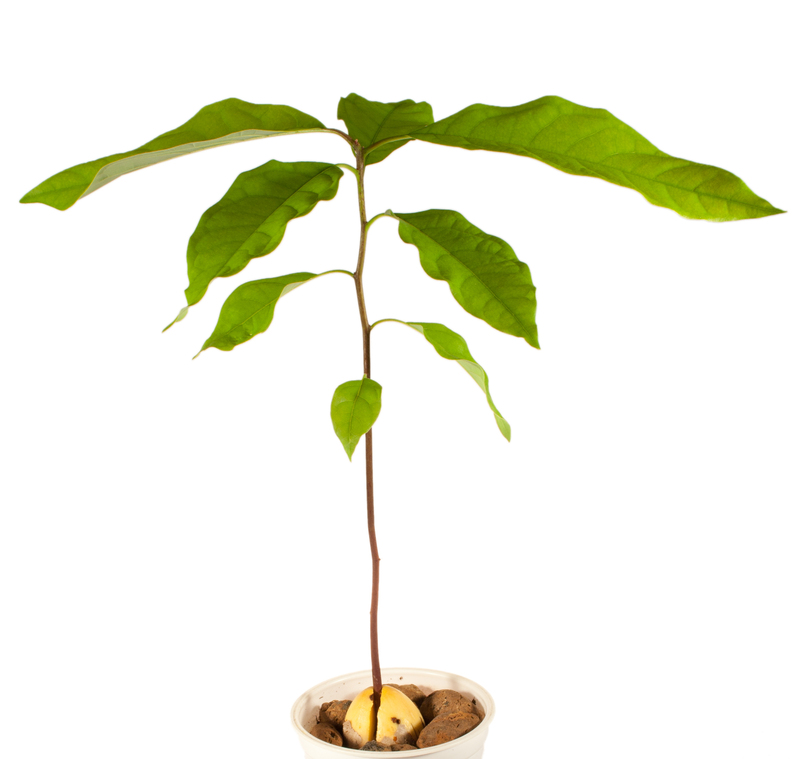A Guide to Artistic Hedge Trimming Techniques
Posted on 11/09/2025
A Guide to Artistic Hedge Trimming Techniques
Transforming bushes and hedges into living masterpieces is an age-old garden art. Mastering artistic hedge trimming techniques not only boosts your garden's aesthetic appeal but also reflects your creativity and gardening skills. Whether you want to craft intricate shapes, create living sculptures, or simply maintain neat geometric lines, this comprehensive guide will walk you through every step of the process.
What Is Artistic Hedge Trimming?
Artistic hedge trimming, also known as topiary, is the practice of shaping hedges and shrubs into decorative forms, both simple and elaborate. This gardening technique dates back centuries, gracing royal gardens and stately homes with animal shapes, spirals, pyramids, and more. Trimming hedges for art combines horticultural skill with an artistic eye, allowing you to express your style in your green space.
- Topiary Art: The most famous form of hedge artistry, involving complex shapes like animals, people, letters, or geometric forms.
- Formal Hedge Trimming: Maintaining precise lines and edges, often in symmetrical patterns or mazes.
- Modern Pruning Styles: Creative, contemporary approaches that use abstract or flowing lines.

Advantages of Artistic Hedge Trimming
Why invest in creative hedge pruning?
- Enhanced Curb Appeal: Well-shaped hedges add instant beauty and a professional touch to your property.
- Plant Health: Regular, careful trimming encourages healthy, dense growth and can prevent diseases and pests.
- Personal Expression: Artistic topiary is an outlet for creativity, enabling gardeners to design unique outdoor features.
- Structure and Privacy: Artistic hedges can define spaces, create natural walls, or provide privacy in a visually enticing way.
Choosing the Right Plants for Artistic Hedge Trimming
The foundation of exceptional hedge art is plant selection. Not all shrubs are ideal for detailed shaping. The best choices are:
- Boxwood (Buxus) - Classic topiary favorite, slow-growing and dense.
- Yew (Taxus) - Flexible, lives for centuries, responds well to heavy pruning.
- Privet (Ligustrum) - Fast-growing, easy to shape, bright green foliage.
- Holly (Ilex) - Shiny leaves, great for bold shapes and patterns.
- Japanese Holly (Ilex crenata) - Small leaves, similar to boxwood, good for compact designs.
- Laurel (Prunus laurocerasus) - Larger leaves, better for big, bold forms than fine details.
Tip: Look for dense foliage, small leaves, and flexible branches--these help achieve sharp edges and intricate designs.
Essential Tools for Hedge Trimming Mastery
A beautiful topiary begins with the right tools. Equip yourself with:
- Shears and Secateurs - For precise hand trimming and tackling tricky spots.
- Power Hedge Trimmers - Ideal for larger, straight sections and quick shaping.
- Topiary Frames - Wire forms used as guides for shaping complex figures.
- String and Stakes - Map out straight lines and symmetrical designs.
- Level and Measuring Tape - Keep your work even, especially for geometric patterns.
- Gloves and Eye Protection - Safety is essential when working with sharp tools.
Seasonal Timing: When to Trim for Best Results
Timing is crucial in advanced hedge pruning techniques to avoid stressing plants and ensure healthy regrowth.
- Spring (Late): Best for the primary shaping cut--plants recover quickly, and new growth fills in gaps.
- Summer: Ideal for maintenance trims and refining shapes, particularly fast-growing hedges.
- Autumn: Light pruning is possible, but avoid heavy cuts as the risk of winter damage increases.
- Winter: Generally not recommended, especially in colder climates. (Exception: mature yews can be cut in winter.)
Tip: Avoid pruning during flowering or active growth surges for best results.
Classic Artistic Hedge Trimming Techniques
Let's explore the most popular forms of hedge trimming artistry:
1. Topiary Sculpting
This is the art of shaping hedges into recognizable figures, such as animals, birds, spirals, or even faces. Topiary requires patience, a three-dimensional eye, and frequent small trims.
- Start Simple: Beginners should practice with balls, cones, or cubes before advancing to animals or people.
- Use Frames: Wire topiary frames can serve as skeletons to train plants into complex forms.
- Trim Little, Trim Often: Regular, light cuts help maintain definition and prevent "holes."
2. Formal Hedge Design
This style focuses on rigid symmetry--neatly clipped rectangles, squares, walls, or mazes found in grand estates and formal gardens.
- String and Stakes Guide: Use lines to achieve perfect straight edges.
- Maintain Height Regularly: Frequent trims keep the top flat and the sides even.
- Sharp Tools Matter: Clean, sharp blades leave tidy cuts for crisp edges.
3. Cloud Pruning (Niwaki)
Originating in Japan, cloud pruning sculpts hedges and shrubs into rounded, cloud-like tiers, evoking a sense of fluidity and tranquility.
- Choose the Right Plant: Pines and other conifers work well.
- Work Gradually: Shape the basic form, then refine each "cloud" for a balanced effect.
- Step Back Often: Evaluate from a distance to ensure harmonious proportions.
4. Abstract and Freeform Pruning
This modern technique breaks the rules. Let your imagination guide you! Wavy lines, asymmetrical shapes, and unique patterns create contemporary visual intrigue.
- Sketch First: Planning helps bring imaginative ideas to life.
- Combine Plants: Mix different species or colors for dynamic arrangements.
- Balance Is Key: Ensure the design complements the overall garden style.
Step-by-Step: How to Create an Artistic Hedge
Ready to try artistic hedge clipping? Follow this detailed guide:
- Plan Your Design
- Sketch your idea or select inspiration from topiary books or online galleries.
- Consider plant variety, garden space, light, and existing features.
- Prepare the Area
- Clear debris and untangle overgrown branches.
- Set up protective gear and tools nearby.
- Mark the Outline
- Use string, stakes, or even chalk to delineate essential lines, curves, or details.
- Begin Trimming
- Start with larger cuts to create the general shape.
- Progress to finer trims as the form emerges.
- Take step backs regularly to assess symmetry and flow.
- Refine and Perfect
- Use hand shears for small details and intricate edges.
- Adjust and modify minor elements for artistic flair.
- Maintain the Shape
- Schedule regular trims through the growing season to retain detail and health.
Common Mistakes in Artistic Hedge Trimming
Even experienced gardeners can run into problems. Keep your hedge sculpture in top form by avoiding these pitfalls:
- Pruning Too Much at Once - This stresses the plant; lighter, more frequent trims are safer.
- Trimming at the Wrong Time - Cutting during extreme heat, frost, or flowering can damage plants.
- Uneven Edges - Always use guides and check your work from different angles to catch imbalances.
- Ignoring Plant Health - Overly tight shapes or neglecting feeding can lead to thinning or disease.
Maintaining Your Artistic Hedge Masterpiece
Preserving shape and health is essential for long-lasting topiary artistry:
- Regular Light Trims: Frequent small clippings, especially during growth spurts, are essential.
- Feeding and Watering: Support vigorous growth and lush leaves with balanced fertilization and consistent moisture.
- Pest and Disease Checks: Watch for signs of trouble and act early to prevent spread.
- Shaping Outgrown Areas: Gently retrain new growth back into the intended form without harsh cuts.
- Winter Protection: Mulch at the base and avoid late season pruning in cold climates.
Expert Tips for Advanced Artistic Hedge Pruning
- Study Professional Gardens: Visit formal gardens and historic estates for inspiration and to observe expert techniques.
- Experiment with Color: Select variegated or flowering species for added visual impact.
- Combine Structures: Use hedges to highlight statues, water features, or pergolas.
- Document Your Progress: Take photos during each trim as both a record and learning tool.
- Be Patient: Stunning topiary art often takes years to mature--enjoy the gradual transformation!
Popular Styles and Trends in Artistic Hedge Design
The world of hedge art continues to evolve, blending tradition with innovation. Some of today's most popular approaches include:
- Green "Living Walls": Hedges shaped as vertical walls, sometimes integrated with other plants or climbers.
- Geometric Patterns: Squares, diamonds, spirals, and tessellated forms for an ultra-modern look.
- Spatial Storytelling: Creating a narrative throughout the garden--animals, chess pieces, or themed shapes that tell a story as you walk.
- Minimalist Forms: Focusing on a single, striking shape for a bold statement.
- Ecological Topiary: Using native plants and low-impact methods to blend artistry with wildlife value.

Frequently Asked Questions
How often should I trim my hedge for artistic shapes?
The answer depends on the plant species and growth rate, but typically, a light trim every 4-8 weeks during the growing season is a good rule of thumb. Fast-growing hedges may require more frequent pruning.
Can I turn an old, overgrown hedge into a topiary?
Yes, but it will take patience. Gradual shaping over several seasons is best, as cutting back too hard at once can damage the plant or leave gaps. Some species, like yew, recover better than others.
What's the best way to fix mistakes or accidental snips?
Don't panic! Most healthy hedges will regrow over time. Gently reshape surrounding areas to blend the error or consider integrating the change into a new design element.
Conclusion: Unleash Your Garden's Potential with Artistic Hedge Trimming
Artistic hedge trimming techniques offer a unique blend of beauty, gardening skill, and creative satisfaction. By mastering both traditional and innovative methods, you can transform ordinary greenery into extraordinary living art. Remember to start simple, use the right tools, trim at the correct time, and care for your plants' health. With patience and dedication, your garden will become your canvas--celebrating the timeless appeal of creative hedge clipping.
Ready to give your garden a signature style? Try one of these artistic hedge trimming methods and join the growing community of garden artists worldwide!

